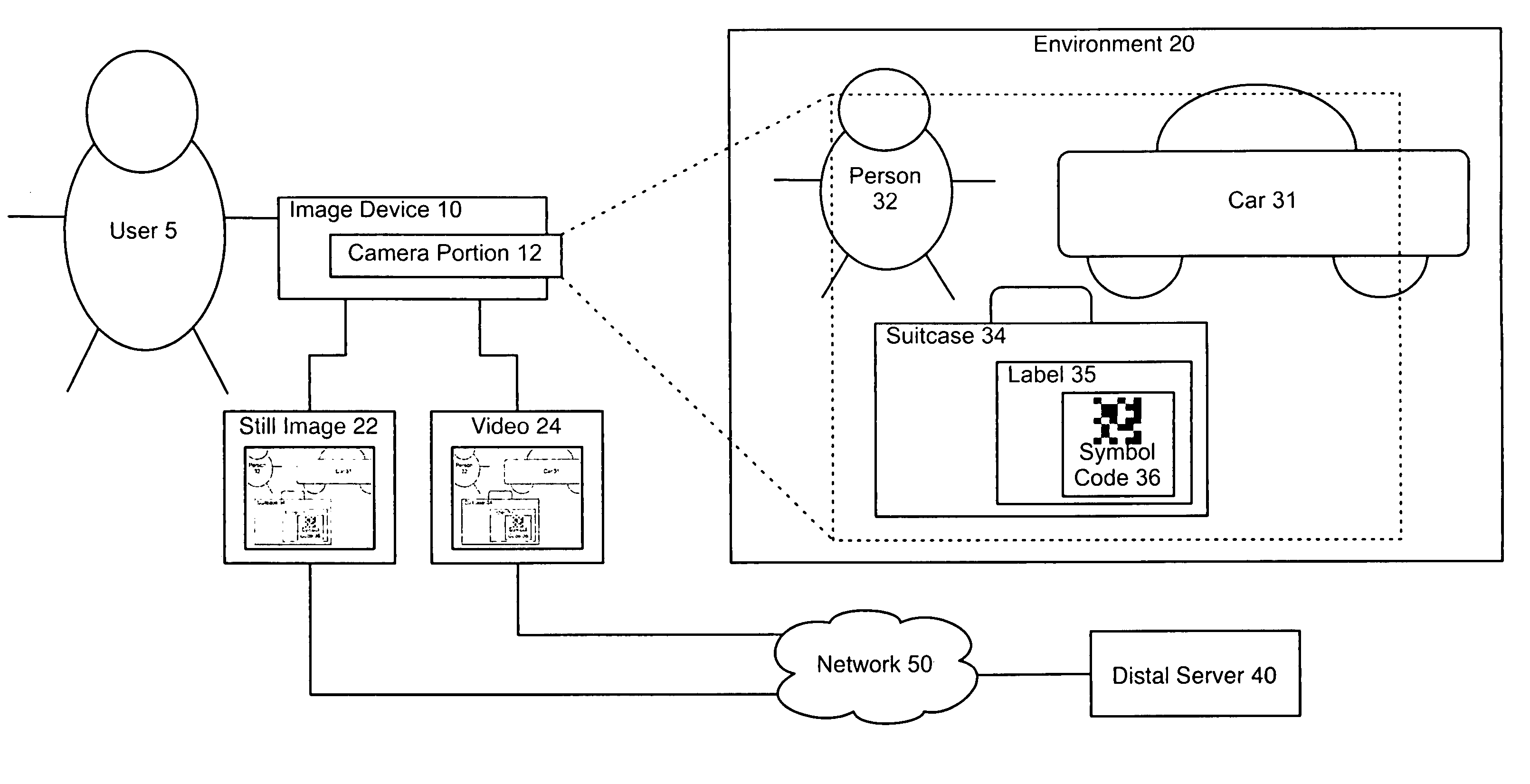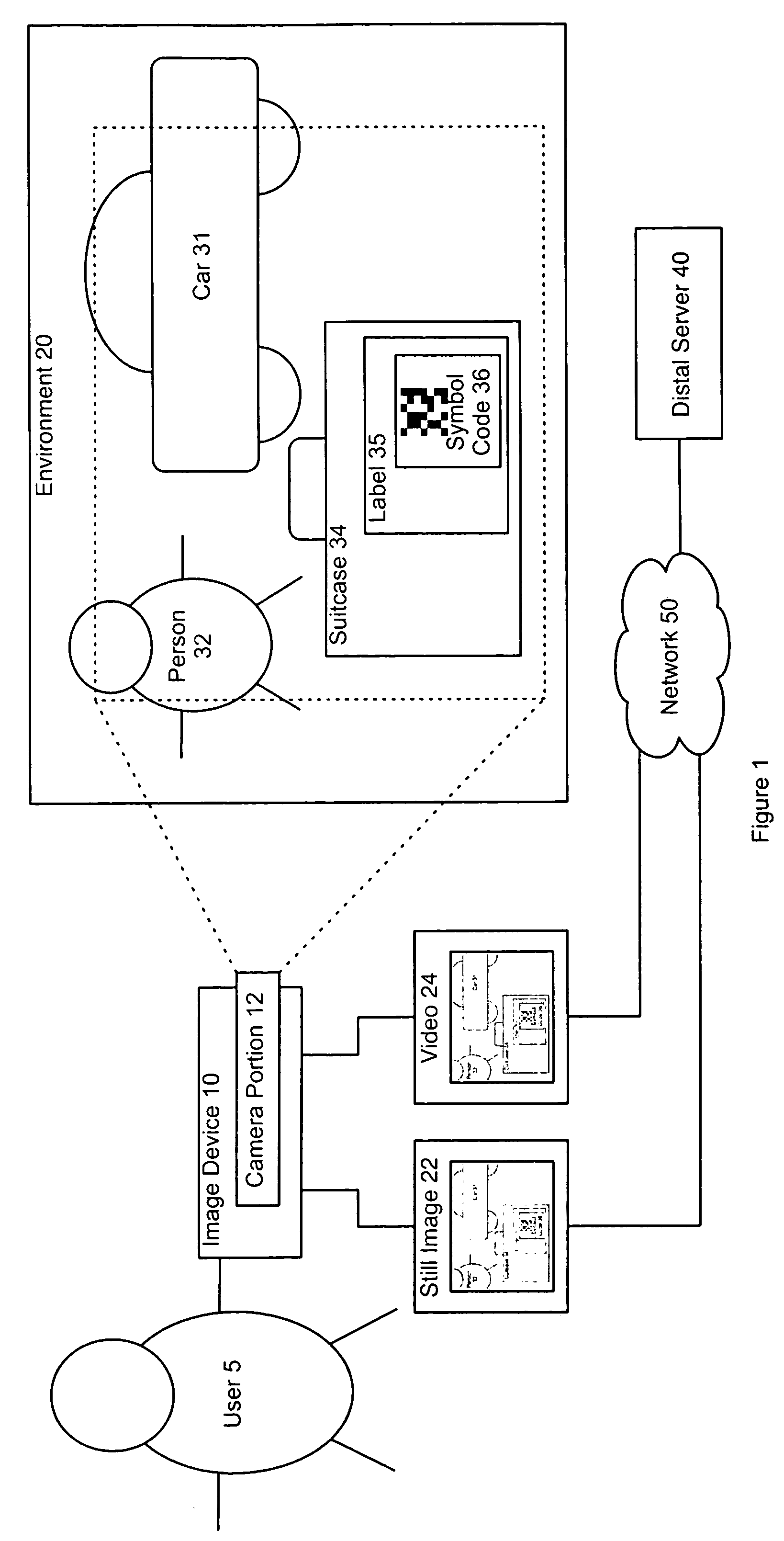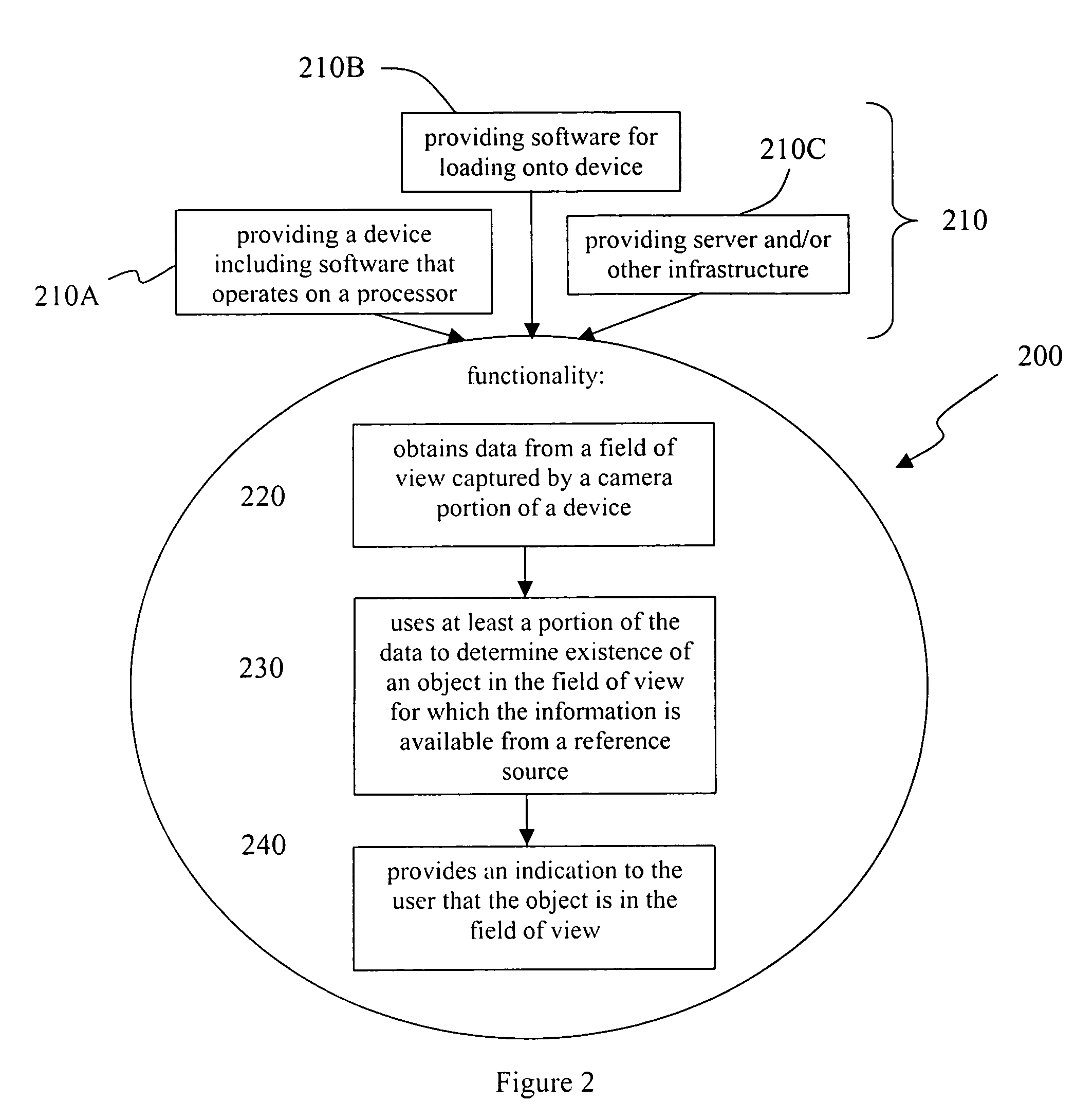Methods and devices for detecting linkable objects
a technology of linkable objects and methods, applied in the field of radios, televisions and other media players, can solve the problems of user disappointment, user does not know which objects in his environment, and users may not know what objects
- Summary
- Abstract
- Description
- Claims
- Application Information
AI Technical Summary
Benefits of technology
Problems solved by technology
Method used
Image
Examples
specific embodiments
Embodiment 1
[0061]A user aims a mobile device at multiple objects. The objects can be, for example, multiple magazines on display at a newsstand, multiple human beings, or various objects on a city street, including automobiles, human beings, stores, and buildings. The user presses a button or selects a menu item which causes a camera in the mobile device to capture an image of the set of objects. The image is preferably transmitted to an external detection service within a distal server via a mobile telephone network and the Internet, but could be transmitted in any suitable manner, including for example a hard wire link. The detection service compares the image to image characteristics of various objects stored in a database. Via such comparison, the detection service identifies objects within the image. The server then creates a web page containing a list oil the identified objects and provides that web page to the mobile device, via a network or networks such as a mobile telepho...
embodiment 2
[0062]As in Embodiment 1, a user aims a mobile device at objects, captures an image, the image is sent to a service, and the service recognizes objects in the image. In Embodiment 2, however, the service sends to the user's device a version of the captured image that includes indications of the identified object within the image. This marked image is displayed to the user by the device. The identified objects can be marked with graphics. The identified objects can be marked with text to indicate the their identity or other information about the them, such as information addresses or online content associated with them. Such markings, including graphics, text, or other images, can be interactive: they can appear on the screen as the user indicates interest in the region of the screen image containing the object, such interest being indicated by moving a cursor, pointer, finger, other pointing mechanism, or other such means.
embodiment 3
[0063]A user aims a camera-equipped device at objects. The device captures real-time imagery (e.g., video) of the scene containing the objects. The imagery is transmitted to a detection service that detects objects in the imagery by comparing the imagery or information derived from the imagery to image characteristics of known objects. If the imagery is provided as a continuous stream then the detection service operates continuously on the imagery stream provided from the device. The detection service provides responses to the device, indicating the presence of detected objects, their position in the scene, their identity, their type, pertinent information address(es), and / or other information about the objects. The responses are provided continuously as the objects are detected. The response information is displayed by the device to the user. This information can superimposed on the imagery or on the current real time image (still or motion) from the camera, thus providing a real-t...
PUM
 Login to View More
Login to View More Abstract
Description
Claims
Application Information
 Login to View More
Login to View More - R&D
- Intellectual Property
- Life Sciences
- Materials
- Tech Scout
- Unparalleled Data Quality
- Higher Quality Content
- 60% Fewer Hallucinations
Browse by: Latest US Patents, China's latest patents, Technical Efficacy Thesaurus, Application Domain, Technology Topic, Popular Technical Reports.
© 2025 PatSnap. All rights reserved.Legal|Privacy policy|Modern Slavery Act Transparency Statement|Sitemap|About US| Contact US: help@patsnap.com



